Excerpted with permission from Official White House China From the 18th to the 21st Centuries by William G. Allman
The house in which the President of the United States lives has always had a great fascination for American citizens who have come to feel they share in the ownership of the Executive Mansion. Throughout its more than 200 year history, the style in which the house is furnished has been determined-to varying degrees-by the money appropriated by Congress from public funds. It is only since the 1960s that private donations have substantially influenced the style in which the house is furnished.
Beginning with the day President John Adams first moved into the new house at 1600 Pennsylvania Avenue, the fortunate few invited to dine have shared their impressions with family, friends, and neighbors back home. Because hospitality is so bound up in ceremonial eating and drinking, such accounts often include some description of the type of food served and the manner and ware in which it is presented. This interest in food and the dishes of the Executive Mansion has been an inspiration for the formal collection of the White House china itself.
In the beginning of the White House story, it was Congress that made it possible for the public to acquire articles used in the President’s House. The act of March 3, 1797, which granted John Adams funds to furnish the President’s House also allowed him to sell things that were worn out, out of style, or unusable. The proceeds could be put towards a so-called “furniture fund” and the sales, often in the form of a public auction, gave the public a chance to buy the White House furnishings acquired with public funds. In 1876, for the first time, presidential china privately collected from the White House was resold at an auction.
Caroline Harrison brought a new perspective on the subject when she arrived at the White House as First Lady in 1889. A talented artist accomplished in watercolors and in china painting, Mrs. Harrison had a love of American history, which was politically expedient as her husband had come into office on a platform of “America first,” advocating high tariffs to protect American industry while publicizing the superiority of America’s products. As First Lady, Mrs. Harrison focused her historical interests on the decorative arts objects associated with White House history, and she made a persistent search for furniture, accessories, and other articles associated with the house and succeeded in bringing to light the necessity for their preservation. One of her ambitions was to save for posterity some examples of the presidential china and plates still in the house. She planned to have a cabinet built in the State Dining Room to display the china, and although she died before she could accomplish this, public interest in the china had been awakened.
The first book to treat the subject of presidential china was China Collecting in America by Alice Morse Earle, published in 1892, which contains a chapter on George and Martha Washington’s china and another on presidential china, and is useful for the information it gives on the market value and owners of china at the time. In 1901, Colonel Theodore A. Bingham, the officer in charge of public buildings and grounds with responsibility for the care and repair of the President’s House obtained permission from First Lady Ida Saxon McKinley for Abby Gunn Baker, a journalist who specialized in historical subjects, to write a story about the presidential china in the White House in the hope that the resulting attention would lead to its preservation. She succeeded and the White House china collection program was officially launched. After President McKinley’s assassination the project was continued with the assistance of the next First Lady, Edith Roosevelt.
First Lady Edith Roosevelt, with her love of history, felt the obligation of being First Lady keenly, and ordered two cabinets to be made for the east end of the lower corridor of the mansion, where the White House china could be seen by visitors. In an effort to form a collection representing every administration, Mrs. Baker and Mrs. Roosevelt accepted china that was privately owned by the earlier presidents as well as was purchased with government funds. Mrs. Roosevelt had the collection designated official government property and placed with other White House furnishings under the care of the commissioner of public buildings and grounds to ensure that it would be a permanent feature at the White House. This was the beginning of the collection displayed in the China Room at the White House today.
Pieces of the state services ordered by Presidents Woodrow Wilson, Franklin D. Roosevelt, and Harry S. Truman were added to the White House China Collection as soon as they were received at the White House. Following the renovation of the White House in the spring of 1952, the chinaware of the presidents was reinstalled in new cabinets in the same China Room.
Early in 1955, President and Mrs. Dwight D. Eisenhower selected a set of handsome service plates with a wide gold rim that could be used with any of the other state dinner services. It was the addition of these plates to the china collection and Mrs. Eisenhower’s own love of beautiful china which prompted her great interest in the collection. With the assistance of the Smithsonian Institution, all of the pieces in the White House china collection were carefully examined in 1957, and many of them were relabeled on the basis of research done by the Smithsonian staff.
Because the state china services used during the administrations of Presidents Andrew Johnson, Taft, Harding, Coolidge, and Hoover were purchased during earlier administrations and were more closely identified with other presidents, Mrs. Eisenhower subsequently added to the collection various pieces of personal china used by these presidents.
When Jacqueline Kennedy became first lady in 1961, her concern for the house and its furnishings prompted her to establish the position of curator of the White House and to appoint a Fine Arts Advisory Committee to assist her with her plans to restore the furnishings of the White House. Today the China Room continues to serve its museum purpose with a rich display of china and glassware from the time of George Washington through Barack Obama.
The term “china,” can be defined as both porcelain and earthenware used for table services at the Executive Mansion. The term acquired this meaning as early as 1889 when Theodore R. Davis wrote his first articles on White House China for The Ladies Home Journal, and it was continued by Abby Gunn Baker and the other writers of the early twentieth century. It is still in use today at the White House where the terms “China Room” and “The White House China Collection” include both porcelain and earthenware used on presidential tables from 1789 to the present.

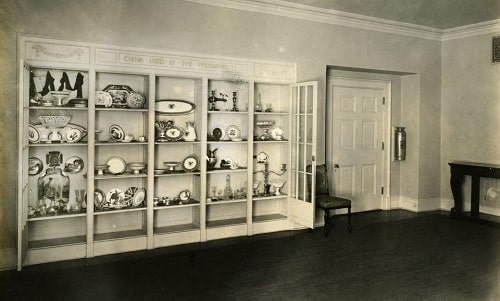
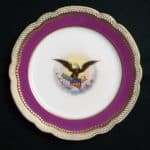
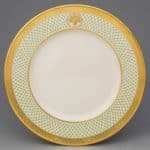

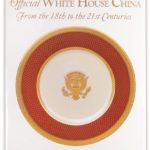




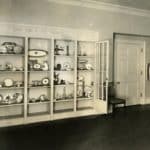



Related posts: